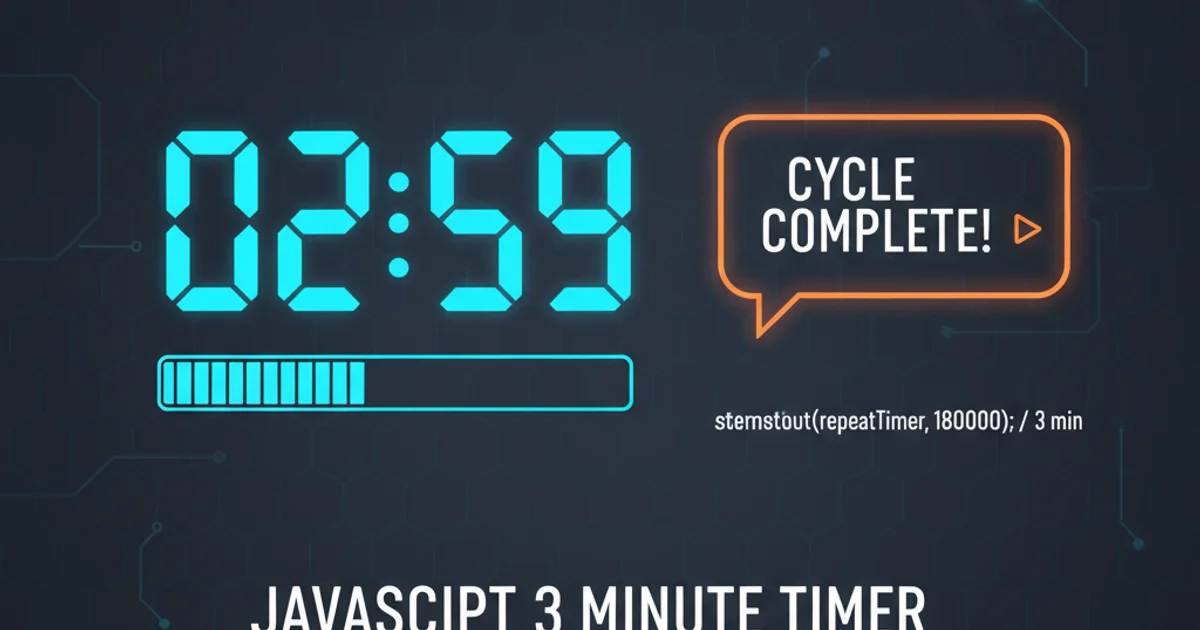Detecting an "invalid date" Date instance in JavaScript
Categories:
Detecting an 'Invalid Date' Instance in JavaScript

Learn how to reliably identify an 'Invalid Date' object in JavaScript, a common pitfall when parsing or manipulating dates. This guide covers various methods and best practices.
Working with dates in JavaScript can sometimes be tricky. One common scenario developers encounter is dealing with an 'Invalid Date' object. This occurs when the Date constructor or Date.parse() function receives an unparseable date string or invalid arguments. While it might seem straightforward to check for this, a simple equality check (date === 'Invalid Date') won't work because an invalid Date object is still an object, not a string. This article will guide you through the correct and robust ways to detect an 'Invalid Date' instance.
Understanding the 'Invalid Date' Object
When JavaScript fails to parse a date, it doesn't throw an error in most cases. Instead, it returns a Date object whose internal time value is NaN (Not-a-Number). This NaN value is what signifies an 'Invalid Date'. The key to detecting it lies in checking this internal state, rather than the object's string representation.
const invalidDate1 = new Date('not a date');
const invalidDate2 = new Date('2023-13-01'); // Month 13 is invalid
const invalidDate3 = new Date(NaN);
console.log(invalidDate1); // Output: "Invalid Date"
console.log(invalidDate2); // Output: "Invalid Date"
console.log(invalidDate3); // Output: "Invalid Date"
console.log(typeof invalidDate1); // Output: "object"
Examples of how 'Invalid Date' objects are created and their type.
Method 1: Using isNaN() with getTime()
The most common and reliable way to detect an 'Invalid Date' is by checking if its internal time value is NaN. Every Date object has a getTime() method, which returns the number of milliseconds since the Unix Epoch. For an 'Invalid Date' object, getTime() will return NaN. You can then use the global isNaN() function to check for this.
function isValidDate(d) {
return d instanceof Date && !isNaN(d);
}
const validDate = new Date();
const invalidDate = new Date('not a date');
console.log(isValidDate(validDate)); // Output: true
console.log(isValidDate(invalidDate)); // Output: false
console.log(isValidDate('hello')); // Output: false (not a Date object)
console.log(isValidDate(null)); // Output: false (not a Date object)
A robust isValidDate function using getTime() and isNaN().
Date before calling isNaN(d.getTime()). Otherwise, calling getTime() on a non-Date object will likely throw an error or return an unexpected result. The d instanceof Date check handles this gracefully.Method 2: Using Number() Coercion (Less Common)
While getTime() is the standard, you can also coerce a Date object to a number. When a Date object is coerced to a number, it implicitly calls its valueOf() method, which returns the same millisecond value as getTime(). Therefore, Number(invalidDate) will also result in NaN.
function isValidDateAlternative(d) {
return d instanceof Date && !isNaN(Number(d));
}
const validDate = new Date();
const invalidDate = new Date('invalid string');
console.log(isValidDateAlternative(validDate)); // Output: true
console.log(isValidDateAlternative(invalidDate)); // Output: false
Detecting invalid dates using Number() coercion.
isNaN() function has a peculiar behavior: isNaN(undefined) returns true, and isNaN({}) returns true. This is why the instanceof Date check is crucial to ensure you're only evaluating actual Date objects.Why Direct Comparison Fails
It's a common misconception that you can directly compare an invalid Date object to a string like 'Invalid Date'. Let's clarify why this doesn't work.
const invalidDate = new Date('bad date string');
console.log(invalidDate); // Output: "Invalid Date"
console.log(invalidDate === 'Invalid Date'); // Output: false
console.log(invalidDate == 'Invalid Date'); // Output: false
Demonstrating why direct string comparison fails.
The Date object's toString() method returns the string 'Invalid Date' when its internal value is NaN. However, the object itself is not a string; it's an instance of Date. Therefore, comparing an object to a string using === or == will always yield false.

Flowchart for detecting a valid JavaScript Date object.